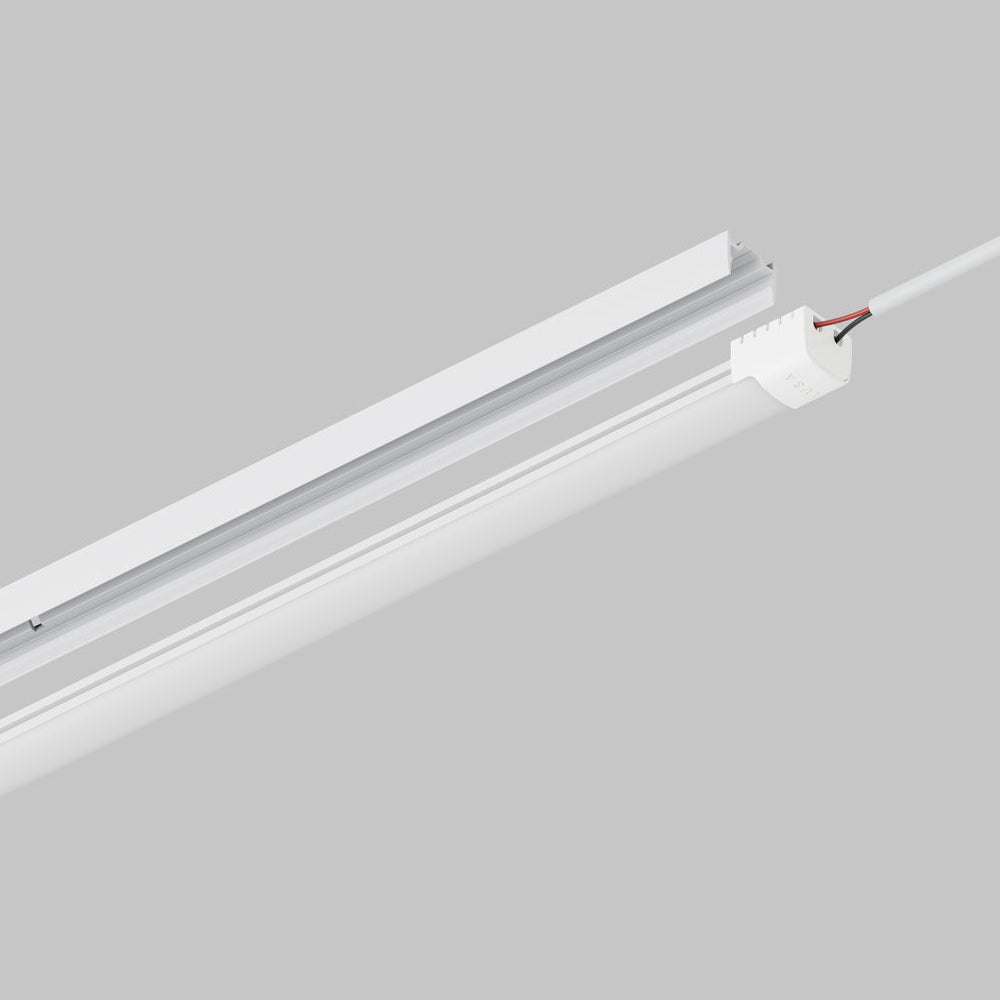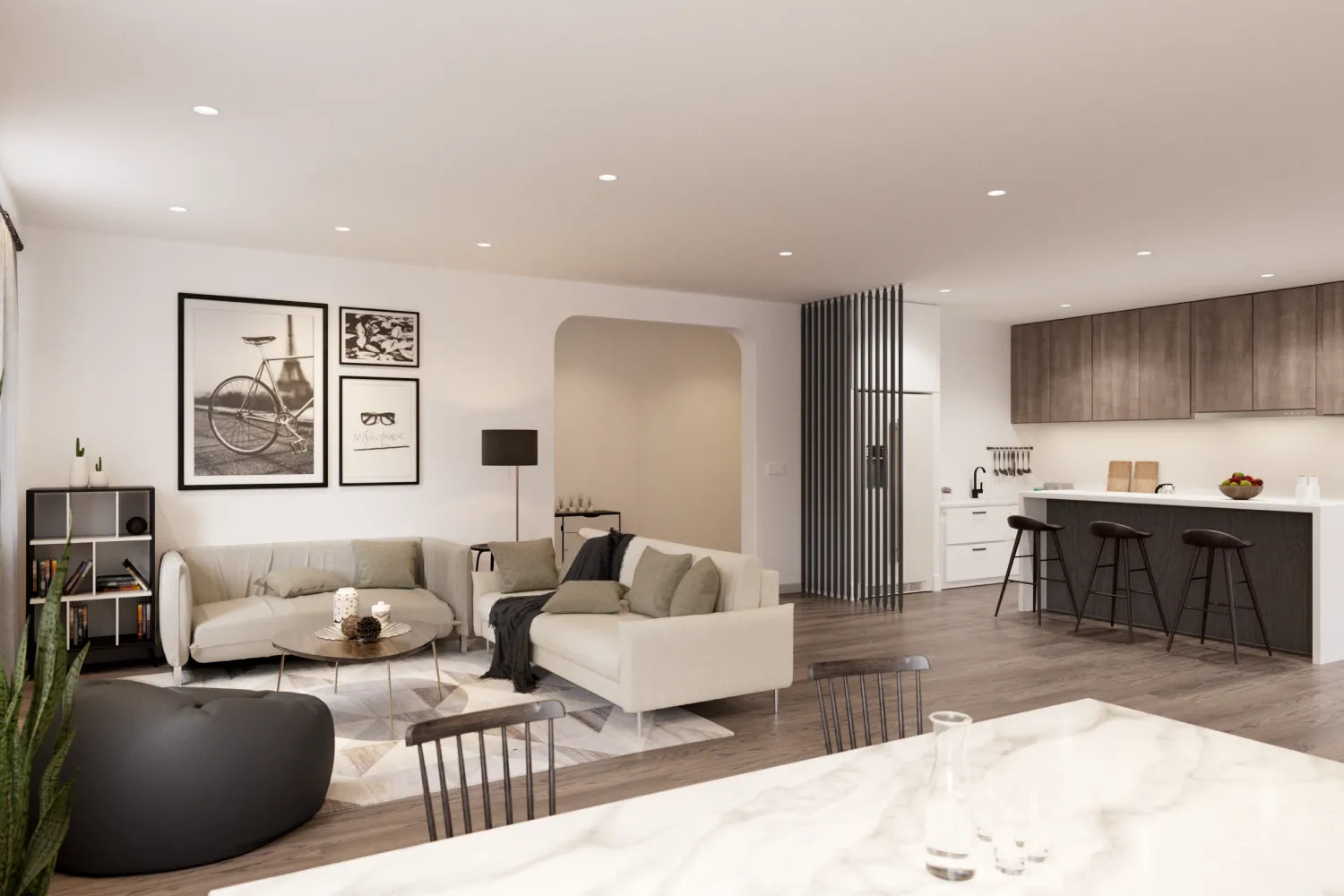With its sleek and modern appeal, recessed lighting has become a staple in contemporary home design. This lighting solution offers a streamlined look by blending seamlessly into ceilings and enhances the ambiance of any room with its subtle illumination.
Among the various options available, LED recessed lighting stands out for its efficiency, durability, and lesser glare, making it a preferred choice for homeowners seeking aesthetics and functionality.
LUSA, a brand with three decades of expertise in architectural lighting, brings designer LED lighting within the average consumer's reach, offering high-quality products that are also easy to install.
Let’s introduce you to the basics of recessed lighting installation, focusing on LED options for maximum efficiency and ease. We’ll provide a comprehensive understanding of the factors that influence the overall cost so you’ll be well informed to make the best decision for your lighting needs.
What Do You Need To Know About Recessed Lighting?
Recessed lighting, often called downlights, can lights, or pot lights, is installed into an opening in the ceiling, creating a clean look that integrates seamlessly with the room's architecture. Depending on the desired effect, these lights direct the light downward, as a broad floodlight or narrow spotlight.
While there are several types of recessed lighting, LED recessed lights are particularly popular due to their energy efficiency, long life, and minimal heat output compared to traditional halogen bulbs.
Benefits of LED Recessed Lighting
LED technology has revolutionized the lighting industry, offering significant advantages over traditional lighting solutions. LED recessed lights consume less energy, which translates to lower electricity bills.
They also boast a longer lifespan, with many LEDs lasting up to 50,000 hours, reducing the need for frequent replacements. Additionally, premium LEDs produce less glare, enhancing visual comfort in living spaces.
Applications
Recessed lighting can be utilized in various home areas to create ambient, task, or accent lighting. In living rooms and bedrooms, it offers a soft, overall light. In kitchens and bathrooms, it provides focused task lighting.
It can also highlight artwork or architectural features throughout a home. The versatility of recessed lighting makes it an ideal choice for enhancing any space's functionality and aesthetics.
What Are the Factors Influencing Installation Costs?
When considering the installation of recessed lighting, it’s important to understand the various elements that can affect the overall cost. These factors ensure homeowners can make informed decisions tailored to their specific needs and budget.
Number of Fixtures
The total cost is directly proportional to the number of lights installed. A larger room requiring more fixtures will naturally incur a higher cost. Planning the number of lights needed based on room size, type of fixtures used, and desired lighting effects is essential for a balanced and effective lighting scheme.
Type of Lighting
Choosing between LED and traditional lighting options like halogen significantly impacts initial costs and long-term savings. While LED lights may have a higher upfront cost, their energy efficiency and longer lifespan result in lower electricity bills and reduced replacement costs over time, making them a cost-effective investment in the long run.
Installation Complexity
The ease or difficulty of installing recessed lighting can vary greatly depending on the fixtures being installed, the ceiling’s accessibility, height, and whether existing wiring is available. Installing lights in high or hard-to-reach ceilings or where additional wiring is needed can increase labor time and costs.
Retrofitting lights in a space with existing fixtures is usually simpler and more cost-effective than installing new wiring in a room without previous lighting.
Labor Costs
Choosing between DIY installation and hiring a professional significantly impacts the project's total cost. While DIY projects eliminate labor costs, they require a certain level of skill and confidence.
Professional installation, on the other hand, while more expensive, ensures the job is done safely and correctly, which is particularly important in complex installations or when dealing with electrical systems.
What Is the Average Cost Breakdown?
To provide a clearer picture of what homeowners might expect to spend on recessed lighting installation, here’s a breakdown of the average costs, considering both DIY and professional installation routes.
DIY Installation
DIY installation can lead to substantial savings for those with some electrical knowledge and the willingness to tackle home improvement projects. The primary expenses will be the cost of the lighting fixtures themselves and any tools or materials not already on hand.
On average, LED recessed lighting fixtures can range from $20 to $100 each, depending on quality and features.
Professional Installation
Hiring a professional electrician or contractor will ensure the installation meets all safety standards and building codes. The cost for professional installation can vary widely, typically from $100 to $250 per fixture, including labor and materials. This cost can increase based on the difficulty of the installation, the type of lights chosen, and regional labor rates.
Additional Costs
There may be additional costs to consider, such as dimmer switches, which can add $20 to $100 per switch, or smart lighting controls, which can increase the overall project cost.
If electrical work is needed to accommodate the new lighting, such as adding or extending circuits, this can also raise the total expense. Permits may be required for electrical work, with costs varying by location.
Step-by-Step Guide to Adding New Lighting to Your Finished Ceiling
The lighting remodel process can be rewarding and cost-effective for those considering the DIY route for installing recessed lighting. However, it's essential to approach this project with careful planning and respect for electrical safety standards.
Here's a simplified guide to help you through the installation process:
Preparation
- Tools and Materials Needed: Ensure you have all the necessary tools before beginning. This list typically includes a drill, a hole saw (matching the size of your recessed lights), wire strippers, a screwdriver, safety glasses, and a ladder. You'll also need the recessed lighting kits, electrical cable, and additional items like dimmer switches.
- Safety Precautions: Always turn off the power at the breaker box before starting any electrical work. Use a voltage tester to confirm the power is off in the area where you'll be working.
Installation Process
- Planning Your Layout: Decide on the placement of your lights. Consider the room's dimensions and the desired lighting effect. The general rule is to space the lights evenly, typically four to six feet apart, depending on the ceiling height and quality of the light fixture.
- Cutting Holes: Once you've marked the positions for each light, use the hole saw attached to your drill to cut out the openings in the ceiling. Take care to make clean cuts and avoid damaging any existing wiring or structures.
- Wiring: Run an electrical cable from your power source to each light location, following local building codes for wiring practices. If you're not comfortable with electrical work, this is the point to consider hiring a professional.
- Installing the Fixtures: Insert the housing of the recessed lights into the holes you've cut, securing them as directed by the manufacturer's instructions. Connect the wiring to each fixture, ensuring all connections are secure and properly insulated.
- Adding the Trim and Light Modules: Once the housing is installed and wired, you can add the trim piece and the LED module or bulb. The trim should fit snugly against the ceiling, providing a clean, finished look.
Final Checks
- Power and Testing: After completing the installation, turn the power back on and test each light to ensure everything works correctly. Adjust any dimmer switches or settings as needed.
Choosing the Right Lighting with LUSA
Selecting the right recessed lighting goes beyond just picking out a fixture. You want a lighting solution that enhances your space's aesthetic appeal and functionality.
LUSA offers a range of recessed LED lighting options designed to meet various needs and preferences, ensuring that every homeowner can find the perfect match for their project.
Product Selection
LUSA's product line includes a variety of recessed LED lights suitable for different applications, from soft, ambient lighting to bright, focused task lighting. With features like Natural Warm Dim that smoothly dims down to five percent while transitioning from vibrant, warm white light to a soothing sunset effect with reduced blue light output, LUSA lights can be tailored to create the desired mood and functionality in any room.
Instructions and Support
LUSA provides expert video and documented instruction and support for those unsure about the best lighting solutions for their space. Their team of lighting designers and electrical engineers is available to advise on product selection, layout planning, and installation tips, ensuring you achieve the best possible outcome for your lighting project.
How To Maximize Your Investment
Installing recessed LED lighting is an opportunity to invest smartly in energy efficiency and long-term savings.
Here’s how you can ensure that this investment delivers the best returns.
Choose the Right LED Fixtures
Selecting high-quality LED fixtures is important for maximizing lighting quality and energy efficiency. LUSA's recessed lights use premium LED chipsets to produce better light distribution and are engineered to provide superior lumen output per watt, ensuring that your spaces are brightly and evenly lit with a fraction of the energy used by traditional bulbs.
This choice reduces your electricity bills and contributes to a more comfortable and sustainable home environment.
Utilize Dimmers and Smart Controls
Incorporating dimmer switches and smart lighting controls can significantly enhance the flexibility and efficiency of your lighting system. By adjusting the light levels to suit different times of the day or specific activities, you can create the perfect ambiance while conserving energy.
Smart controls offer the convenience of adjusting your lighting remotely, further optimizing your home’s energy usage. LUSA lights are compatible with both forward and reverse-phase dimmers, making them extremely versatile.
Regular Maintenance
While LED lights are renowned for their longevity and low maintenance, ensuring your recessed lighting fixtures are clean and dust-free enhances their efficiency and light output. Periodically check and gently clean the fixtures to maintain optimal performance.
This simple step ensures your LED lights continue providing beautiful, efficient lighting for many years.
Lighting the Way Forward: Installation Made Easy
As you upgrade your lighting, remember that LUSA's expertise in architectural lighting is unmatched. Their commitment to quality and efficiency makes their products an excellent choice for those looking to bring premium lighting into their homes.
With LUSA, achieving a beautifully lit, inviting, and energy-efficient space has never been easier.
For anyone looking to upgrade their home lighting, now is the time to explore LUSA's extensive range of recessed LED lighting solutions. Browse our site for more information on products, installation guides, and expert advice to light up your home beautifully and efficiently.
Sources:
Recessed Lighting - Code Compliance Brief | Energy.gov
What is Accent Lighting in Interior Design? | Interior Design Schools


